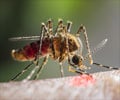Microcephaly, a very usual feature in cases of Zika virus gestational infection, is just one of several observed brain changes.

‘Microcephaly, a very usual feature in cases of Zika virus gestational infection, is just one of several observed brain changes.’





According to Dr. Fernanda Tovar-Moll, correspondent author of the study and researcher at IDOR and UFRJ, the study was essential to identify the severity of the neurological changes induced by the viral infection in the developing central nervous system. Dr. Deborah Levine, coauthor of the study, also stresses the importance of describing different malformations in the brains of fetuses and newborn babies caused by zika virus.
Unlike observed in other infections such as toxoplasmosis, rubella, cytomegalovirus and herpes, the fetuses' and babies' brains infected by zika virus showed cortical malformations and changes located at the junction of the brain's white and grey matter. The researchers also identified reduction in brain volume, cortical development abnormalities and ventriculomegaly, a condition in which the brain cavities (spaces filled with fluids) are larger than normal. Notwithstanding the fact that almost all babies have shown abnormalities in head circumference, cases of normal circumference in babies with severe ventriculomegaly were also found. The results also pointed out abnormalities in the corpus callosum, a bundle of nerve fibers that allows communication between the brain's left and right sides and further in neuronal migration, i.e., the neurons didn't move to its correct destination in the brain.
The research team will undertake further research correlating morphological changes observed in this study with clinical and immunological data, in addition to information from the environment where mothers and babies were infected. "We are developing a follow-up study to investigate how the congenital infection by Zika virus can interfere not only in the prenatal period but also in the postnatal brain maturation. Microcephaly is only the tip of the iceberg," said Dr. Fernanda Tovar-Moll.
Source-Eurekalert











